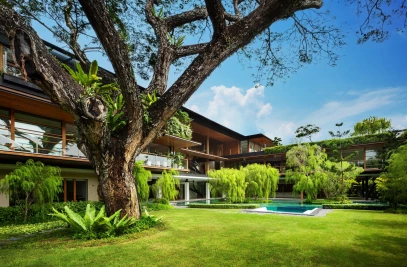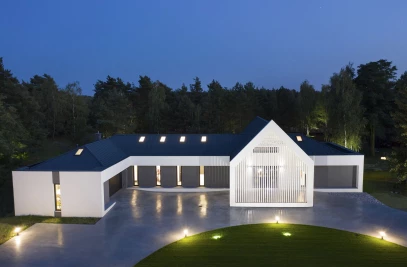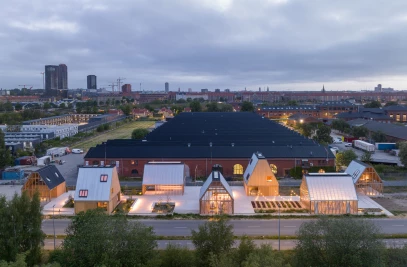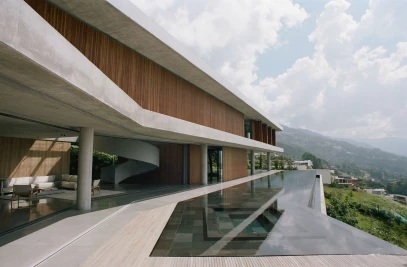Located in Tanghan Fangshan National Geological Park, Ruralation Museum Hotel by AZL Architects is conceived as an extension of a former quarry site. Themes of concrete, stone, water, the history of the earth, and the human history of Tangshan are also explored.

Tangshan Fangshan National Geological Park is a national geological park in the eastern suburbs of Nanjing and in the foothills of Zijin Mountain. The park is well known for an early 1990s discovery of the skull of the ‘Nanjing ape man,’ an artefact estimated to date back about 600,000 years. The Ruralalation Museum Hotel is located in the Tangshan Homo Erectus Relic Park and supports the park’s Museum. The quarry site is notable for having undergone an extensive ecological restoration and risk elimination in recent years.

Stone is central element of Tangshan building. The China Cement Plan and Jiangnan-Xiao Ye Tian Cement Plant in Tangshan were once pillars of the industry. In recent years, ecological protection measures, in addition to mass urbanisation, have seen these plants close, but their high-quality white cement remains a symbolic material in the region. In reference to quarry traditions, the hotel is constructed with stones unearthed from the site’s excavation, plus white cement from the quarry site.

The overall building area of the hotel is approximately 5500 m2 and includes 39 hot spring holiday rooms with supporting facilities that include Chinese and western dining halls, conference and multi-functional space, an exhibition hall, fitness room, meditation space, design library, landscape activity area and outdoor swimming pool.

The architecture is guided by three main axes, which connect humans to building to nature. The architects describe the three axes as such:
The east-west axis of the main entrance starts from the square. Open, clear and illuminated with light, the axis travels through the downslope into a cavernous circular hall, recalling the mysterious genesis of Tangshan ape men.
The east-west axis of the main entrance and north-south axis come to cross at a rotunda. The rotunda houses the design library and Lava Lab lifestyle shop. Moving westward along the axis, the exhibition hall is at the end of the first floor. Together with the lifestyle shop and design library, this is the core of the hotel’s interior amenity space.

Moving up a set of circular outdoor stairs that stem from one side of the lobby, three key indoor and outdoor public places being the roof garden, multi-functional sharing space and infinity swimming pool area situated along the east-west axis. This axis passes through the swimming pool and disappears into the mountains to form the first disappearance of architecture into nature.
The north-south axis starting from the design library in the rotunda forms the building’s central connection with nature. As well, the north-south axis is the main line of motion connection the public areas with the guest room areas. 20 of these guest rooms are arranged around a waterscape courtyard facing the valley cliff, while semi-open-air cylindrical hot spring pools in the courtyard are neatly arranged, forming a vivid boundary to the building.

A two storey family guest room enriches the rhythm and scale of the central axis. The north-south axis ends at the concrete cylinder at the end of the site, and the cylinder with the background of the precipice is design to serve as a place for meditation. Here, the space turns to the sky and the architecture/building falls away to nature once again.
The third control axis of the Ruralation Museum turns west yet again, and the motion line extending to the mountains. When overlooking the distant mountains and sunset on the western side of the building, boundaries of physical space end, with the building disappearing into nature for a third time.




































